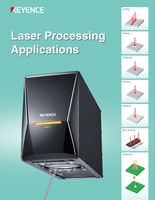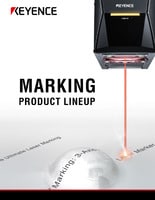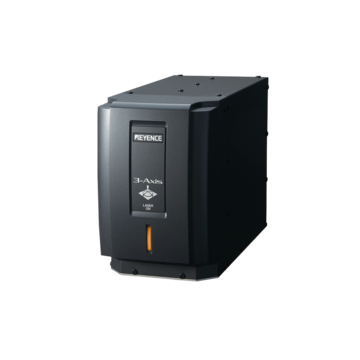Laser Marking Systems / Laser Markers
What is Laser Rust Removal & How Does It Work?
-
Tags:
- Laser Rust Removal , Laser Cleaning , Metal
Rust is a natural electrochemical reaction that occurs on metal when it comes in contact with an acidic substance. As a result, the structure weakens and is damaged, appearance fades, magnetic attraction weakens, and friction is created. If you work with metal, you've likely encountered rust in your career and are familiar with how unwelcome it is.
Although rust is almost impossible to prevent completely, even with additives like rust-preventing paint, there is a solution to removing it. Although you can attack the issue with chemical rust removers or extensive manual labor tasks (like sanding, shot blasting, and grinding), a laser cleaner is the most efficient and effective way to remove rust from the surface of a material.
Whether in the automobile, aerospace, semiconductor, or medical device industry, laser rust removal with a laser cleaner can benefit you. In this blog, we'll dive into how to clean with laser rust removal, its advantages and disadvantages, applications, and safety concerns.


How Does Laser Rust Removal Work?
Laser rust removal is a laser cleaning process that utilizes laser ablation. Laser ablation is achieved by using a laser cleaner with a high peak power and short pulse frequencies; this could be a fiber laser or a hybrid laser. The laser beam is focused onto the rust and heats it to the evaporation point. Once the rust converts into gas, it evaporates and leaves behind a clean finish that conquers the problems rust once gave the part.
Advantages and Disadvantages of Laser Rust Removal
Advantages
- Damage-Free Removal
- Laser rust removal does not damage the external surface of a part to remove the rust. Instead, the laser cleaner uses focused light to evaporate rust without altering the structural integrity of the part.
- Environmentally Friendly
- Laser rust removal is environmentally friendly because it requires no extra additives, excessive waste, or chemical use. Using a laser cleaner does not produce any environmental waste because the material disintegrates by evaporation.
Alternatives to laser rust removal include shot blasting, DIY methods, sanding, grinding, or using rust-removing chemical combinations. The chemicals and materials are eventually disposed of and add to the growing waste that harms the environment. - Focused Removal
- Applying a laser to remove rust is a detailed method that allows targeted treatment of rusted areas without altering the surrounding area. Especially with KEYENCE's 3-Axis design that includes a 3-axis lens with a built-in camera that tracks deviation, the laser removes rust without any edge distortion that conventional F-theta lenses produce.
Focused removal is particularly useful for parts with curved edges, small corners, and hard-to-reach rust. The laser will stay in focus to remove rust precisely, even on non-traditional geometries. - No Manual Labor
- Laser rust removal with a laser cleaner happens in seconds or minutes, depending on the size of the area, and hardly requires more than a simple machine setup and part placement. It doesn't require any special rust removal knowledge or labor-intensive work.
Alternatively, you may have experienced many other rust removal options that require plenty of manual labor. From wire brushes, sanding, grinding, and outsourcing rust removal companies, these options require extensive manual labor that is costly in both time and money.
Disadvantages
- Size Limited
- Laser cleaners are versatile and can be used in industries that work with big parts, but there is a limit to the area that laser cleaning can remove rust from. A laser cleaner uses a stage as the base for focusing on rust removal, so the part needs to be able to fit on the stage somehow.
- Variations of Lasers
- Not all laser machines are created equal and require research before purchasing. For instance, when cleaning rust off of a large area, maybe you don't need to be as picky with your laser cleaners' specific camera or axel function. But if the rust is distinct to one area on a part, then doing extra research into the axel and camera functions of a laser cleaner is essential.
Applications of Laser Rust Removal
- Surgical Scissors
- Surgical scissors have curved edges, thin pieces, and hidden corners. Not only that, but these tools are constantly being washed- a sure way to speed up the rusting process. With the thin beam and precise laser of a laser cleaner, rust removal is easily achieved for scissors to keep up with regulatory standards.
- Stainless Steel Power Cables
- Using laser rust removal on a power cable is an optimal choice because it does not affect the electric flow or damage the outside material. Using sanding or drilling on a power cable may result in a defective product that must be discarded or be dangerous to the handler because of exposed wires.
Instead of having to discard a power cable when it rusts, using a laser cleaner is gentler and allows for continued use of a power cable.
Top Industries that Benefit from Laser Rust Removal
Any industry that uses metal parts made from iron can benefit from laser cleaning. Some examples may include:
- Automobile
- Aerospace
- Defense / Military
- Medical Devices
- Semiconductor
Safety of Laser Rust Removal
Laser rust removal is one of the safest ways to remove rust compared to its counterparts. A laser machine is set up on a shop floor and is operated without risk. Laser cleaning involves no chemical inhalation or sand or steel flying around from blasting. Likewise, when enclosed correctly, there is no danger from high heat or other conditions deemed unsafe for the human body to be exposed to.
Ready to Use a Laser for Your Rust Removal?
Laser rust removal as a laser cleaning process doesn't damage the external surface while still removing pesky rust that is preventing your parts from their full potential. It's a safe, environmentally friendly, and effective alternative to all other rust-removing options.
Ready to see it in action? Contact KEYENCE today for a free demo of a laser cleaner!
Related Downloads

This booklet covers a wide range of laser processing techniques - such as cutting, drilling, and deep engraving - as well as welding and soldering that are unique to lasers.


![LASER TECHNICAL GUIDE [An Introduction]](/img/asset/AS_69962_L.jpg)

